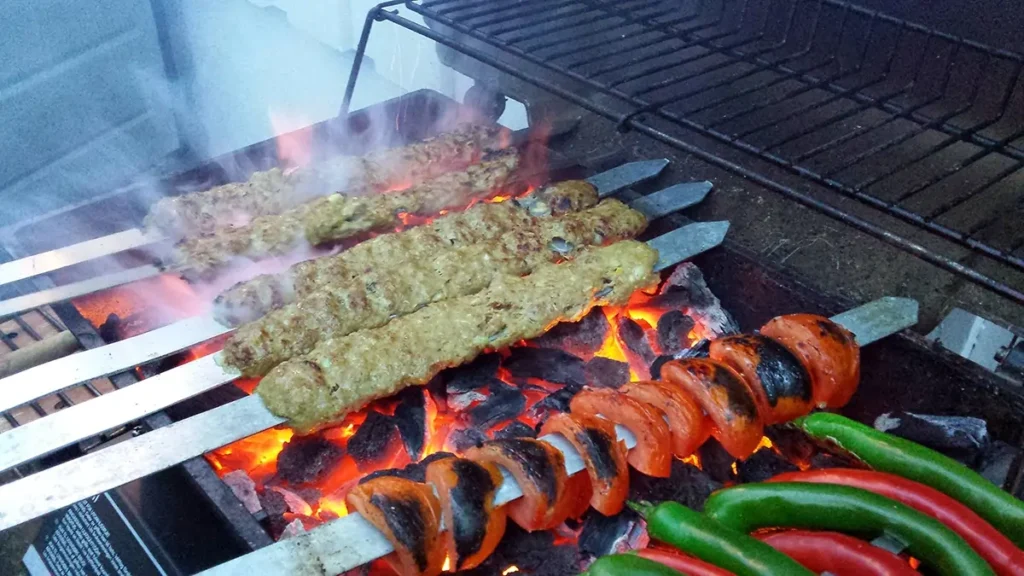
How to Cook Kabab Koobideh (Persian Recipe)
If you’ve ever strolled past a Persian grill or dined at an Iranian celebration, you’ve likely been enchanted by the scent of smoky, spiced meat sizzling over open flames. That irresistible aroma? It’s almost certainly Kabab Koobideh—one of the crown jewels of Persian cuisine. This dish isn’t just food; it’s an experience that combines centuries of history, precise technique, and deeply satisfying flavors. Whether you’re a seasoned home chef or just beginning your culinary journey, learning to prepare Kabab Koobideh is a delicious way to impress both your friends and your own taste buds. Read on to discover what makes this kebab so special, how to master it at home, and where to find the best Koobideh in Europe!
What is Kabab Koobideh?
Kabab Koobideh is a beloved Iranian dish made from ground meat—usually beef, lamb, or a mix of both—mixed with onion and a handful of carefully selected spices. The name “Koobideh” derives from the Persian word “koobidan,” meaning “to beat” or “to pound,” referencing the traditional method of preparing the meat. Unlike many kababs that use chunks of meat, Koobideh is shaped around wide, flat skewers and grilled to perfection. Its signature texture is tender and juicy, bursting with savory depth, and it’s often served alongside fluffy Persian rice, grilled tomatoes, and fresh herbs.
The History of Kabab Koobideh
Kabab Koobideh is more than just a meal; it is a symbol of Persian hospitality and culture. Its origins date back hundreds of years, believed to have evolved from the ancient traditions of grilling meat over open fires—a technique shared by various cultures along the Silk Road. Over time, Iranian chefs elevated the recipe by perfecting the grind and mixing of meats, and by introducing onions and subtle seasonings to enhance flavor and tenderness.
Today, Koobideh is a cornerstone of Iranian gatherings, from Sunday family meals to the lavish feasts of Nowruz (Persian New Year), and is celebrated as a dish that brings people together across generations.
What Are the Nutrition Facts of Kabab Koobideh?
When it comes to nutrition, Kabab Koobideh is both hearty and wholesome, particularly when paired with vegetables and rice. Here’s a closer look at its nutritional profile (amounts vary depending on recipe and serving size):
- Protein: High, owing to generous portions of beef or lamb—great for muscle health and satiety.
- Fat: Medium to high, especially when using lamb or beef with some fat, which contributes to its juiciness and flavor.
- Carbohydrates: Very low in the kabab itself, making it appealing for low-carb diets (though traditionally served with rice or bread).
- Micronutrients: Rich in iron, zinc, B vitamins (from the meat), and vitamin C and antioxidants (from onions and herbs).
A typical skewer (about 150 grams cooked) provides roughly:
- Calories: 250–350 kcal
- Protein: 20–25g
- Fat: 18–25g
- Carbs: 1–2g (excluding rice/bread)
When enjoyed as part of a balanced meal, Kabab Koobideh is both indulgent and nutritious.
How to Cook Kabab Koobideh in the Persian Way
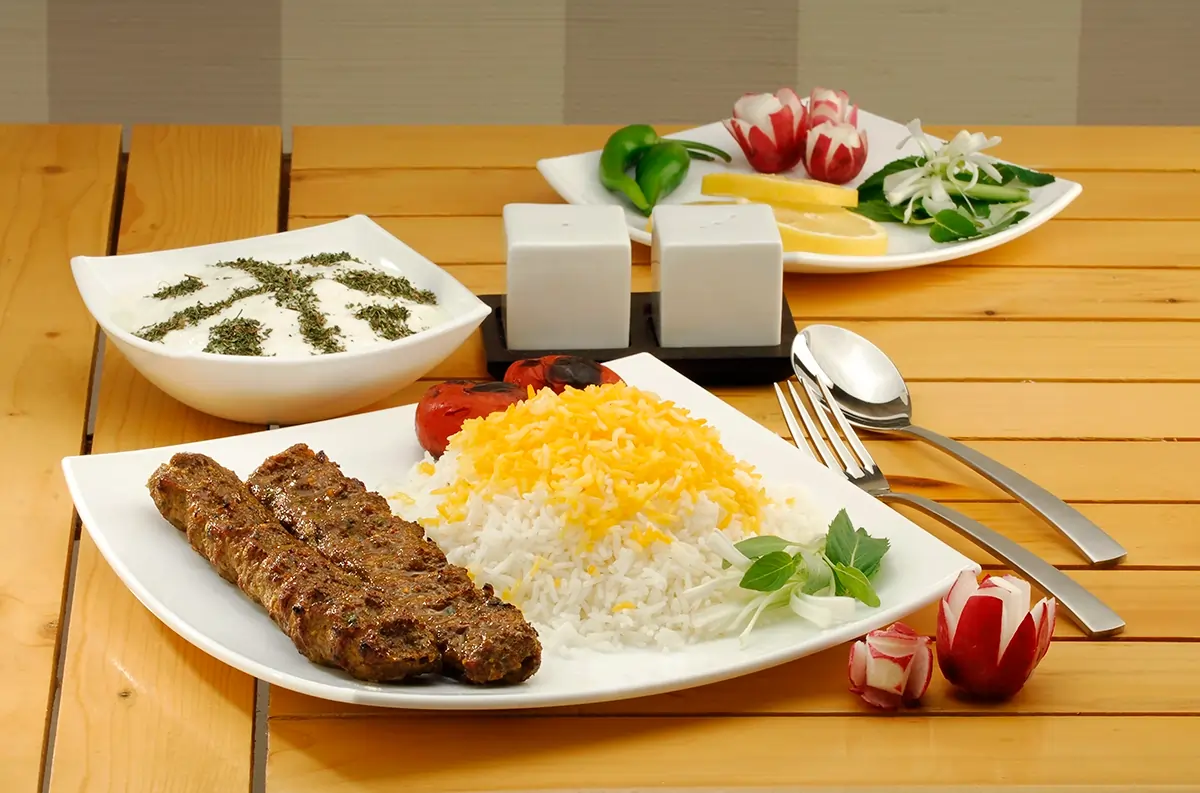
Ingredients
Traditional Kabab Koobideh
- 500g ground beef or lamb (or a 50/50 blend), ideally with 20% fat for juiciness
- 1 large onion (grated and well-drained)
- 1.5 teaspoons salt
- 1 teaspoon black pepper
- ½ teaspoon turmeric
- Flat metal skewers (essential for authentic results)
Optional:
- Pinch of sumac (for serving)
- Saffron water or melted butter (for basting)
- Grilled tomato, rice cake(Tahdig), or flatbread (for serving)
Essential Seasonings:
-
Salt
Brings out the meat’s natural flavors and helps with texture.
-
Black Pepper
For mild heat and depth.
-
Onions
Finely grated onions are absolutely crucial—they add moisture, natural sweetness, aroma, and help bind the meat. The onion is usually grated, excess juice squeezed out, and mixed thoroughly with the ground meat.
-
Turmeric
Used in many Iranian recipes, turmeric gives a light earthy flavor and a subtle golden hue.
Optional (But Common and Authentic) Extras:
-
Sumac
A tangy, lemony spice often sprinkled on top after grilling, not usually mixed in.
-
Saffron
Sometimes a little saffron water is brushed on during or after grilling for distinct aroma and rich color.
Some modern recipes might add mild spices like paprika or even garlic powder, but classic koobideh usually sticks to the above list to keep the flavor true to Persian roots.
Summary Table:
| Seasoning | Role in Koobideh |
|---|---|
| Salt | Essential for taste |
| Black pepper | Depth, gentle heat |
| Onion | Aroma, moisture, binder |
| Turmeric | Color, subtle aroma |
| Sumac (serving) | Tangy finish |
| Saffron (optional) | Fragrance, rich color |
Recipe to cook Kabab Koobideh
- Prepare the Onion:
Grate the onion and squeeze out as much juice as possible. This step is crucial; too much moisture will cause the kababs to fall off the skewers.
- Mix the Meat:
In a large bowl, combine ground meat, grated onion, salt, pepper, and turmeric. Knead the mixture by hand for at least 5–8 minutes, until it’s sticky and slightly elastic. This helps the kabab hold together during grilling.
- Chill the Mixture:
Cover and refrigerate the meat mixture for at least 1 hour (overnight is even better). This allows flavors to meld and the mixture to firm up.
- Shape the Kababs:
With wet hands, take a handful of the mixture and shape it around a flat metal skewer, making a long, flat kabab about 2 cm thick. Make sure it’s evenly distributed and pressed tightly against the skewer.
- Grill:
Preheat your charcoal grill or broiler to high heat. Place skewers on the grill, turning once for even char and doneness. Total cooking time should be about 6–8 minutes, or until cooked through with nice brown grill marks.
- Baste & Serve:
As they finish cooking, brush the kababs with saffron water or melted butter. Serve immediately on a bed of hot rice with grilled tomatoes and a sprinkle of sumac.
Tips and Techniques
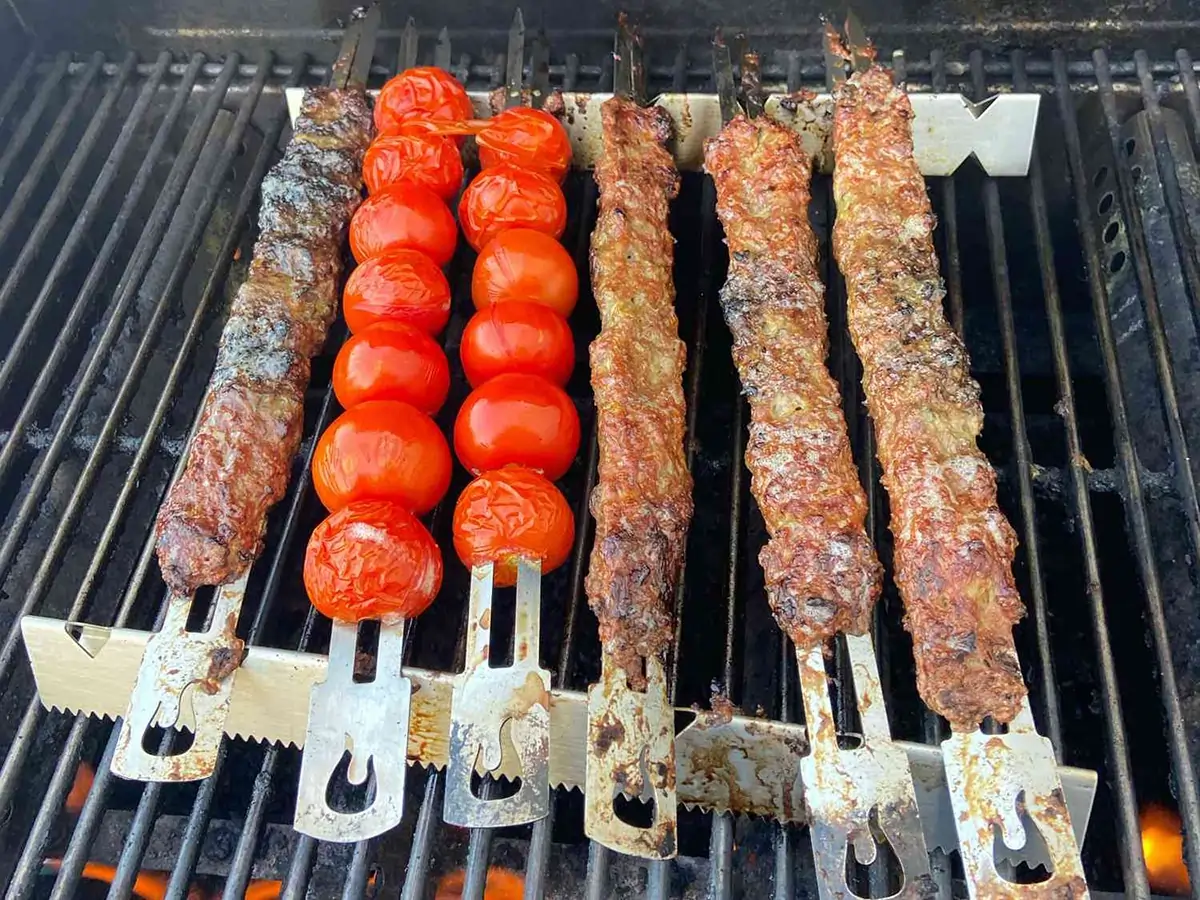
- Fat is Flavour: Don’t use extra-lean meat. Proper fat content is key for tenderness and preventing drying.
- Drain Onions Well: Any excess moisture will prevent the kabab from sticking to the skewer.
- Knead Well: This step cannot be skipped. A well-kneaded mixture is sticky and elastic, which ensures the kabab won’t crumble.
- Skewer Size Matters: Use wide, flat metal skewers; thick enough to hold the meat but not too wide to prevent even cooking.
- Charcoal Prefered: For the best flavor, use a charcoal grill. If not possible, use a hot broiler or grill pan.
- Serving Suggestion: Serve with “chelow” (Persian saffron rice), grilled vegetables, and “sabzi khordan” (a plate of fresh herbs like basil, mint, and tarragon).
Where to Find Best Kabab Koobideh in America?
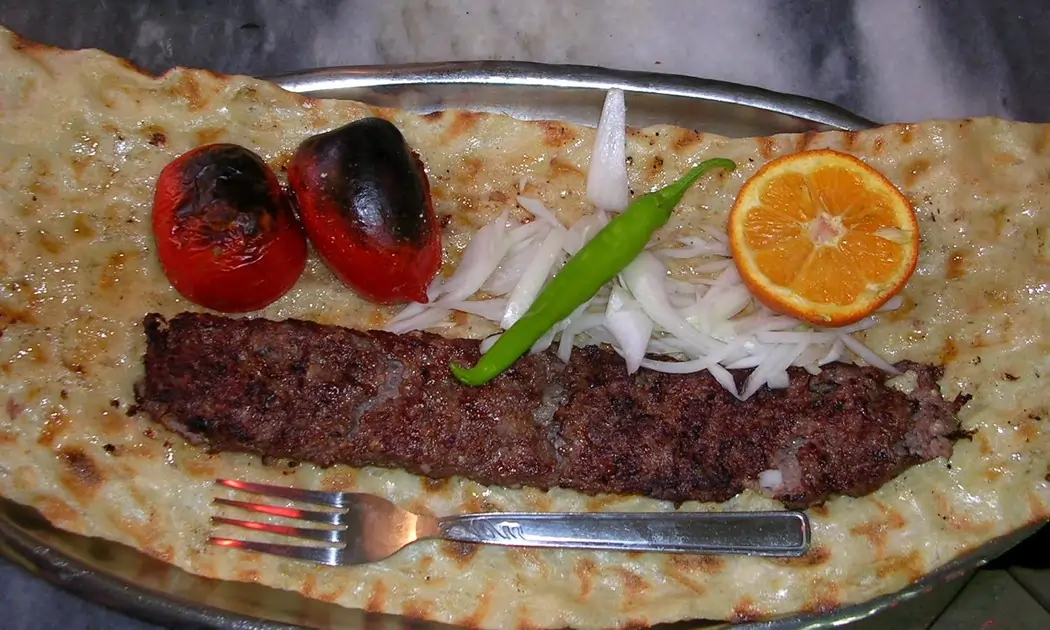
Tip: Always look for family-operated restaurants or those with Iranian chefs for the most genuine flavor.
The most common challenge to grill Koobideh:
How do you keep the meat from falling off the skewers
A common struggle is getting the meat to consistently adhere well to the skewers, despite successful seasoning and flavor. Home cooks often seek advice on mixing, meat-to-fat ratio, and technique to make sure kabobs don’t fall apart while grilling.
What to Eat Beside Kabab Koobideh
No Persian meal featuring Kabab Koobideh is complete without a selection of traditional sides that enhance and complement its flavors.
- One of the most classic accompaniments is Sabzi Khordan, a platter of fresh herbs such as basil, mint, tarragon, and radishes. These crisp greens provide a refreshing contrast to the rich, juicy kabab.
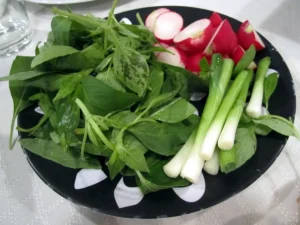
- Pairing your koobideh with a glass of Dough, a tangy, yogurt-based Persian drink, helps balance the meal and cools the palate, especially on warmer days.
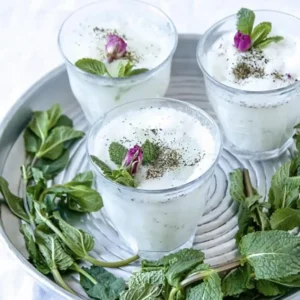
- For a zesty kick, serve some Torshi, a medley of pickled vegetables that bring a delightful sourness and crunch to your bite.
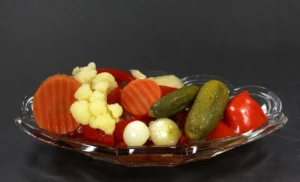
- Finally, don’t forget Noon Sangak, the traditional Persian stone-baked bread. Its chewy texture and unique flavor are perfect for wrapping pieces of kabab or soaking up the savory juices. Together, these sides create a harmonious, authentic Persian dining experience.
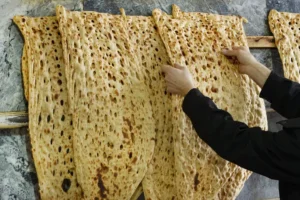
nutrition facts table:
table of the main nutrition facts for one average skewer (about 150 grams) of Kabab Koobideh:
| Nutrition | Amount (Per 150g Skewer) | Notes |
|---|---|---|
| Calories | 250–350 kcal | Varies with fat content and meat type |
| Protein | 20–25 g | From beef or lamb |
| Fat | 18–25 g | Higher if using fattier meat |
| Carbohydrates | 1–2 g | Almost none, unless served with rice/bread |
| Iron | 2.5–3.5 mg | High, supports blood health |
| Zinc | 4–5 mg | Immune support |
| Vitamin B12 | ~2.5 mcg | From red meat |
| Vitamin C | 2–4 mg | From onions, herbs |
| Cholesterol | 70–90 mg | Typical for red meats |
| Sodium | 500–700 mg | Depends on salt added |
Values are approximate and can vary by recipe, meat mix, and serving size.
Conclusion
Kabab Koobideh is much more than a kabab—it’s a culinary journey into the heart of Persian hospitality, tradition, and flavor. Rooted in history and cherished at every Persian table, this dish brings people together through the art of grilling and sharing. With detailed tips and careful technique, you can now recreate the magic of Kabab Koobideh in your own kitchen, or seek out the very best versions across Europe.
Enjoyed learning about Koobideh? For even more delicious discoveries, don’t miss our other articles on Iranian cuisine, especially our complete guide to cook Ghorme Sabzi, the beloved Persian herb stew! Bon appétit, and happy grilling!
FAQs
- What kind of meat is best for Kabab Koobideh?
A mix of ground beef and lamb with about 20% fat content is ideal for juicy, flavorful koobideh.
- Why do my kababs fall off the skewer?
Too much moisture in the onion or not kneading the meat mixture enough can cause kababs to fall apart. Squeeze onions well and knead thoroughly.
- Can Kabab Koobideh be cooked without a grill?
Yes! You can broil them in the oven on high heat or use a grill pan on the stove for similar results.
- Do I need special skewers for Kabab Koobideh?
Flat, wide metal skewers work best. Round or thin skewers may not hold the meat mixture properly.
- Can I use chicken instead of beef or lamb?
Yes, you can make chicken koobideh using ground chicken, but adding a bit of fat (like chicken thigh or a little oil) is important for moisture.
- How long should I marinate the meat mixture?
Let the mixture rest in the fridge for at least 1 hour (up to overnight) for best flavor and texture.
- What side dishes go well with Kabab Koobideh?
Serve with Persian rice (chelow), grilled tomatoes, fresh herbs (sabzi khordan), pickles, and flatbread.
- Can I freeze Kabab Koobideh before cooking?
Yes, shape the kababs on skewers, freeze them separated by wax paper, and cook straight from the freezer when ready.

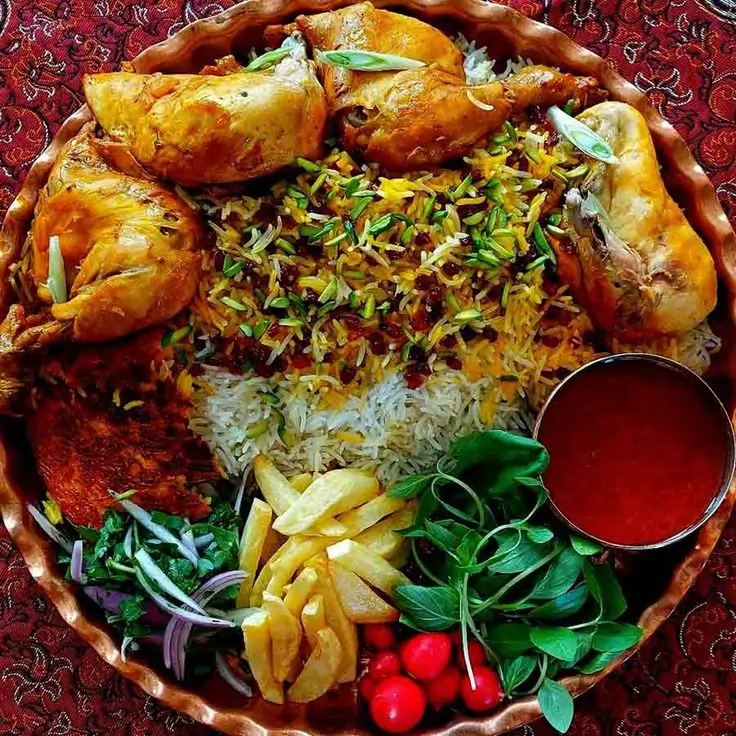
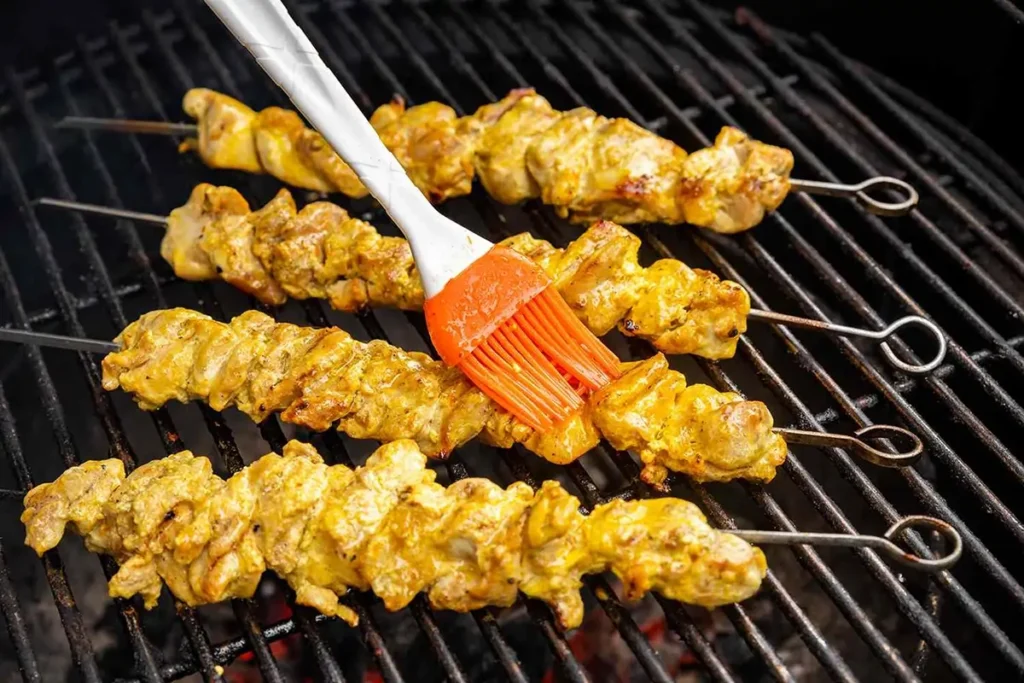
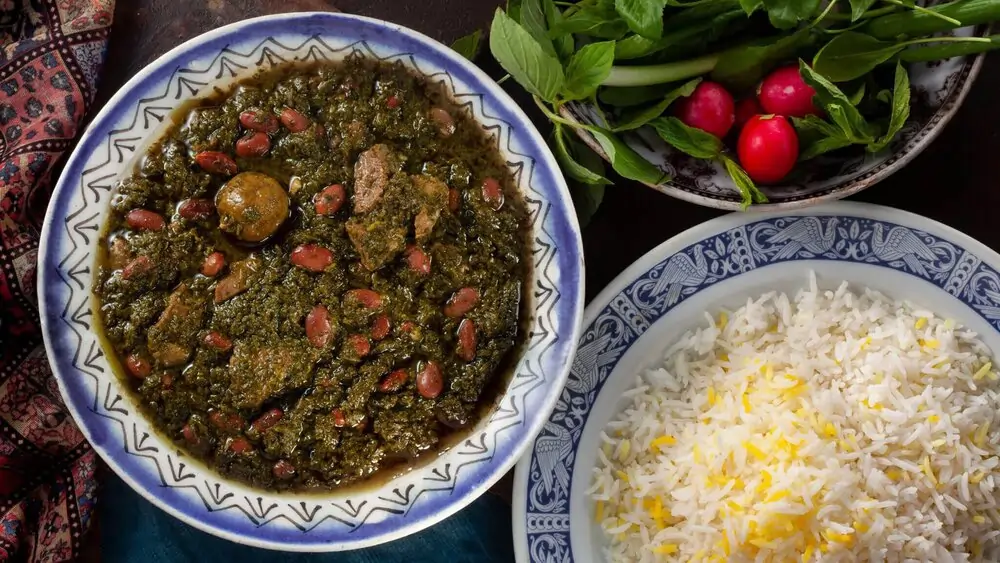
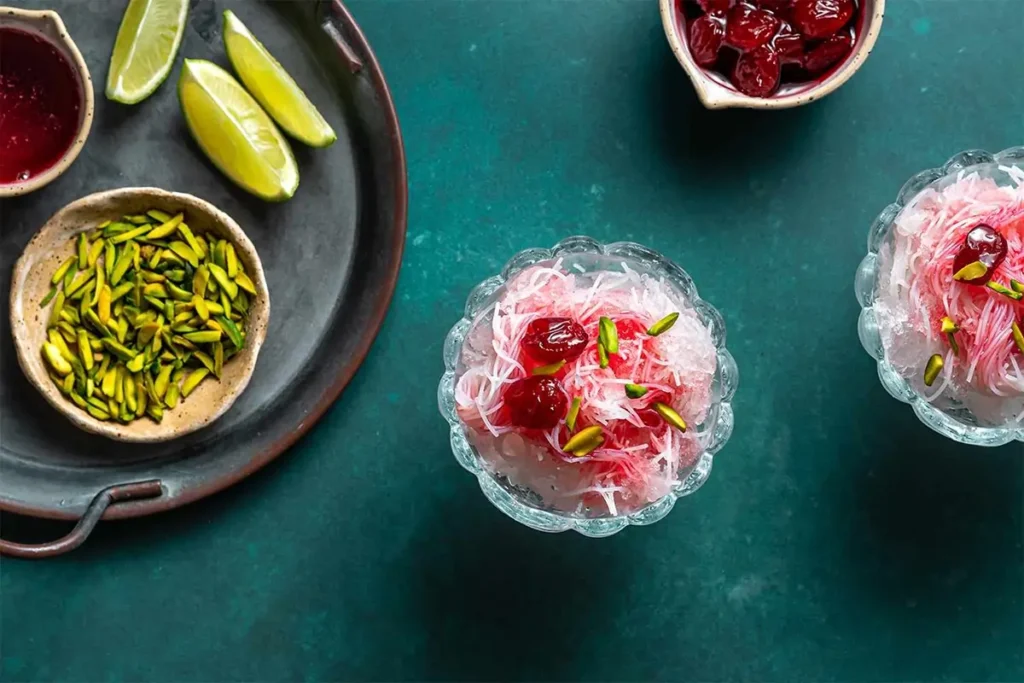
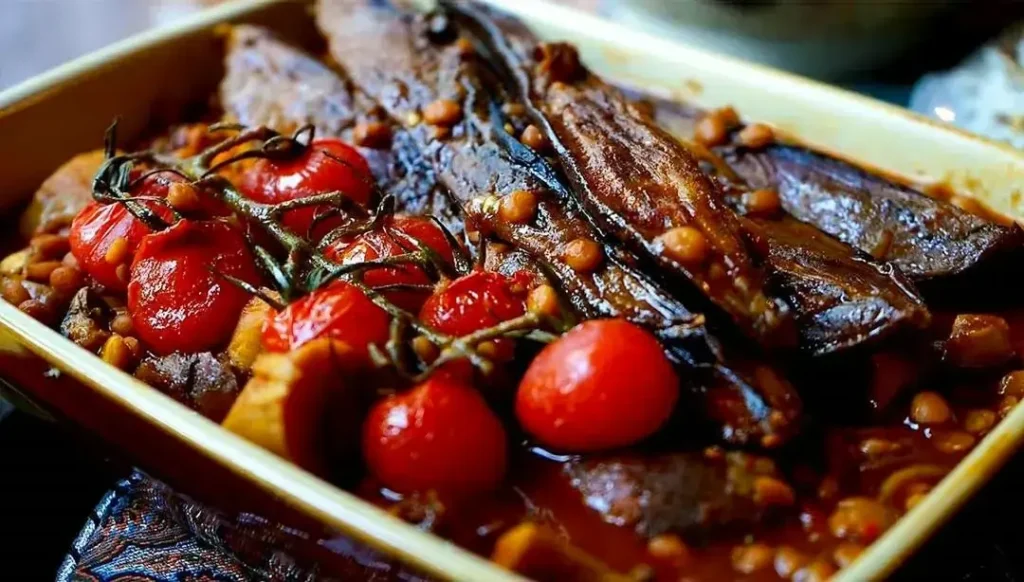
Responses